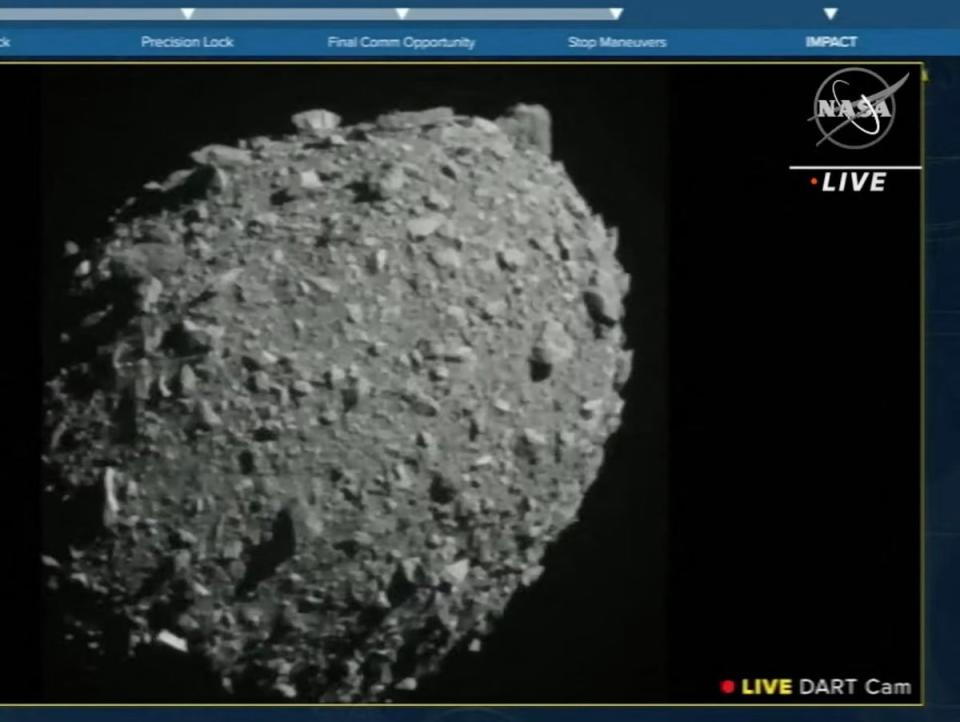Astronomers puzzled by spinning asteroid that is flinging rocks into space

Astronomers have found that the asteroid Didymos may be spinning so fast that it could be constantly spewing debris and materials into space, an advance that may have an impact on how such space rocks are studied.
Didymos is the larger companion space rock of the asteroid Dimorphos that Nasa impacted last year as part of its Dart mission.
The Dart mission was a proof of concept test which showed for the first time that the course of an asteroid could be altered by slamming a spacecraft onto it.
While both Dimorphos and its parent rock Didymos are not a threat to Earth, Nasa proved that its technology could potentially be used one day to deflect hazardous asteroids on a collision course with Earth.
Nasa’s Dart mission attempted to rendezvous a spacecraft with the pair of asteroids around 6.8 million miles from Earth and slam into Dimorphos at around 14,000 miles per hour to see how the impact could change the smaller asteroid’s orbit around Didymos.
Later, analysis of the collision revealed that the mission successfully reduced the orbital period of Dimorphos around Didymos by about 32 minutes – shortening its 11-hour and 55-minute orbit to 11 hours and 23 minutes.
“As new data come in each day, astronomers will be able to better assess whether, and how, a mission like DART could be used in the future to help protect Earth from a collision with an asteroid if we ever discover one headed our way,” Nasa said.
As astronomers continue to study the two asteroids, they have uncovered that Didymos is spinning so quickly, completing a full rotation in about every 2.2 hours, that it is flinging rocks into space.
Earlier research had theorised that the smaller Dimorphus may have come to existence as debris flung from Didymos coalesced near it.
The new observations indicate such material is still being flung from the parent rock.
“Massive particles potentially levitate for some time, land on the surface and lift off again, repeating such cycles over and over, or just land at latitudes from which further lift off is not possible,” researchers wrote in the study.

 Yahoo Lifestyle
Yahoo Lifestyle 